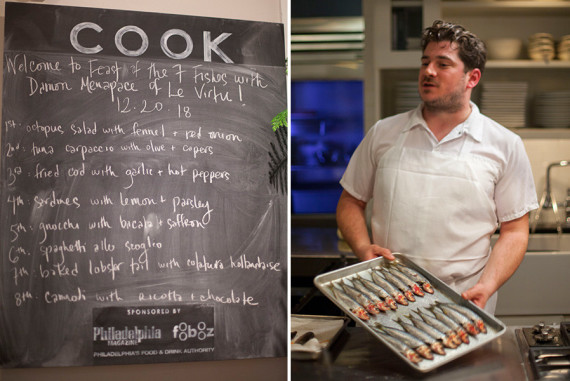It’s Christmas Eve and for many Italian American families, this means a fish feast is imminent! Feast of the Seven Fishes aka “The Eve” is a Southern Italian tradition which typically calls for at least seven different kinds of seafood dishes served before the stroke of midnight. Every family has their own rendition of the fish-focused spread, and the dishes served vary based on traditions and what’s been served in the past. Chef at the Abruzzo-inspired South Philly restaurant Le Virtù, Damon Menapace brought this Italian Christmas Eve tradition to COOK last week with his own interpretation of said feast. Serving seven different seafood dishes (plus dessert!) by himself was quite a feat to watch. Damon put on a show while serving up some tasty bounties of the sea. Sea for yourself what Damon Menapace cooked up and learn a bit about this fin-tastic Italian fish feast!
Damon started off the night with a small octopus salad topped with fennel and red onion. While everyone was eating this light dish, Damon sliced thin pieces of tuna for his second plate – tuna carpaccio. Fresh sushi grade tuna with olives and capers really put everyone in a Mediterranean mood. Following the tuna carpaccio was a fried cod bite, drizzled with salsa rosa. Preserved local paprika peppers, that were peeled and salted in the summer for use at Le Virtù as needed, were the main component of the salsa rosa.
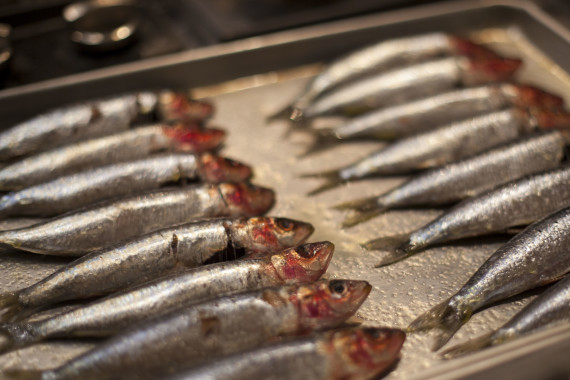
Sardines get a bad name. Most people think immediately of slimy, canned little fish jammed into tin cans. Damon wanted to shed some light on how delicious these little guys can be, so he demonstrated how to clean and cook fresh sardines from start to finish. First of all, sardines can be relatively large compared to the tinned varieties. Check your local fish purveyor such as Samuels and Son for fresh sardines. According to Damon there are just two main steps in cleaning sardines: taking the scales off, and removing the guts. To remove the scales hold the fish under running water and use a spoon to flake them off starting from the tail to the back – it’s that easy! The guts can be removed by cutting along the belly and scraping them out with your knife. Be sure to rinse off the sardine, inside and outside.
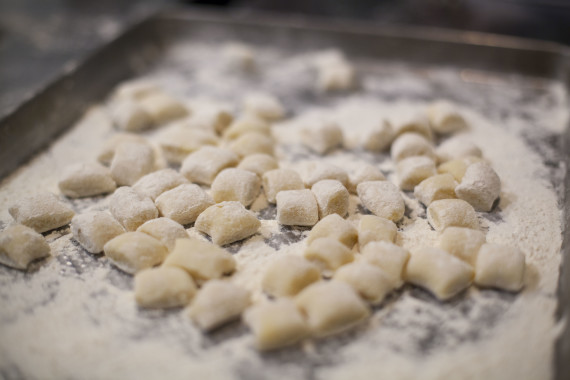
Of course it wouldn’t be an Italian feast without pasta! Alongside baccala (Italian salt cod) and saffron were beautiful little pillows of potato gnocchi that Damon made by hand in front of everyone. Damon had many tips for making gnocchi at home, as they can be difficult to make successfully. First, when cutting the gnocchi from a long cylindrical piece of dough flick your wrist a bit so that the pieces don’t stick together. Put plenty of flour down while you are cutting them and on the tray where you group them together. While cooking gnocchi, when they float to the top, they aren’t necessarily done. A good way to tell if they are almost ready is to look for the color to turn a bit opaque. Cook them 80% of the way in your pot of salted boiling water, and finish them in your pan with sauce and a little starchy pasta water.
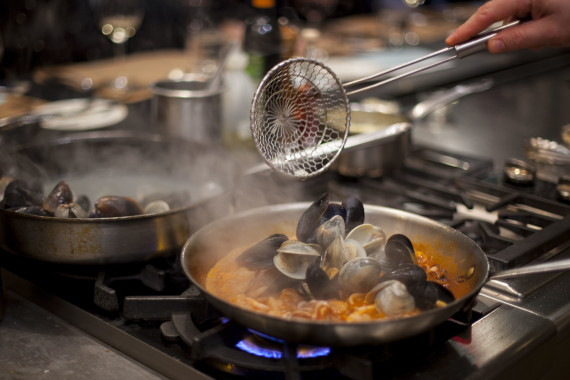
Because there’s never too much pasta, Damon followed up his gnocchi and baccala with spaghetti alla scoglio (seafood pasta). Literally this would translate roughly to spaghetti on the rocks, referring to the shoreline stones where clams, mussels and shrimp thrive. After steaming the clams and mussels and tossing them with some white wine to help them open, Damon added them to a tomato sauce. They key to this dish was adding in the shrimp at the end as to not overcook them.
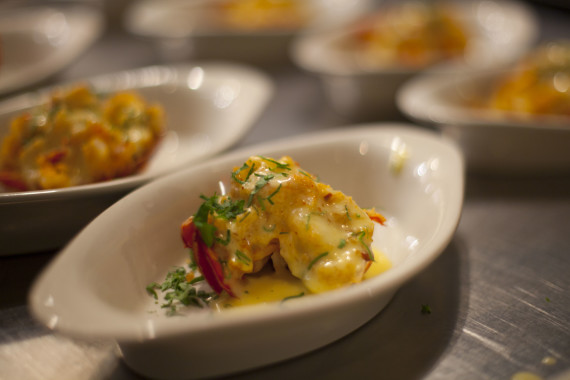
The final seafood course that Chef Menapace treated our guests to was a baked lobster tail with colatura hollandaise. While doing research into what is typically served at many Italian Feasts of the Seven Fishes, Damon found that this lobster dish was a traditional plate. What made his take on the recipe so unique was the incorporation of colatura (an Italian fish sauce derived from anchovies) in the hollandaise. Damon explained that to make colatura, anchovies are packed in a wood barrel, salted and left to sit for about 2 months. Afterwards a hole is poked at the bottom of the barrel and the drippings are collected creating colatura. It is extremely pungent and a little bit goes a long way. A frequent COOK guest said this was one of the best dishes she had ever enjoyed in our space!
After a salty, savory seafood-filled night, guests enjoyed a sweet ricotta and chocolate cannoli. Damon and our guests raised glasses of amaro and toasted to a gill-orious dinner, a merry Christmas, and a happy New Year. Salute!
Back to Blog
